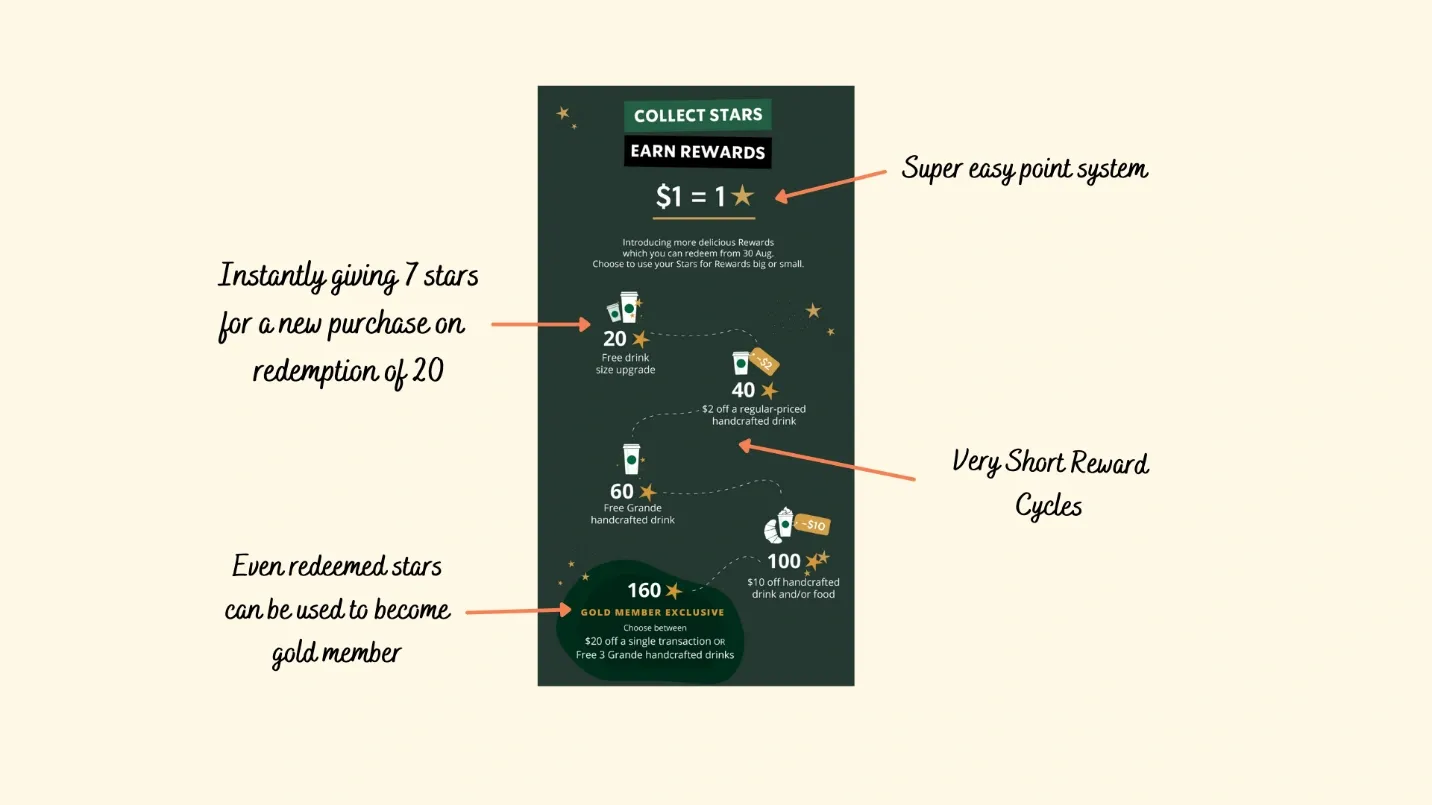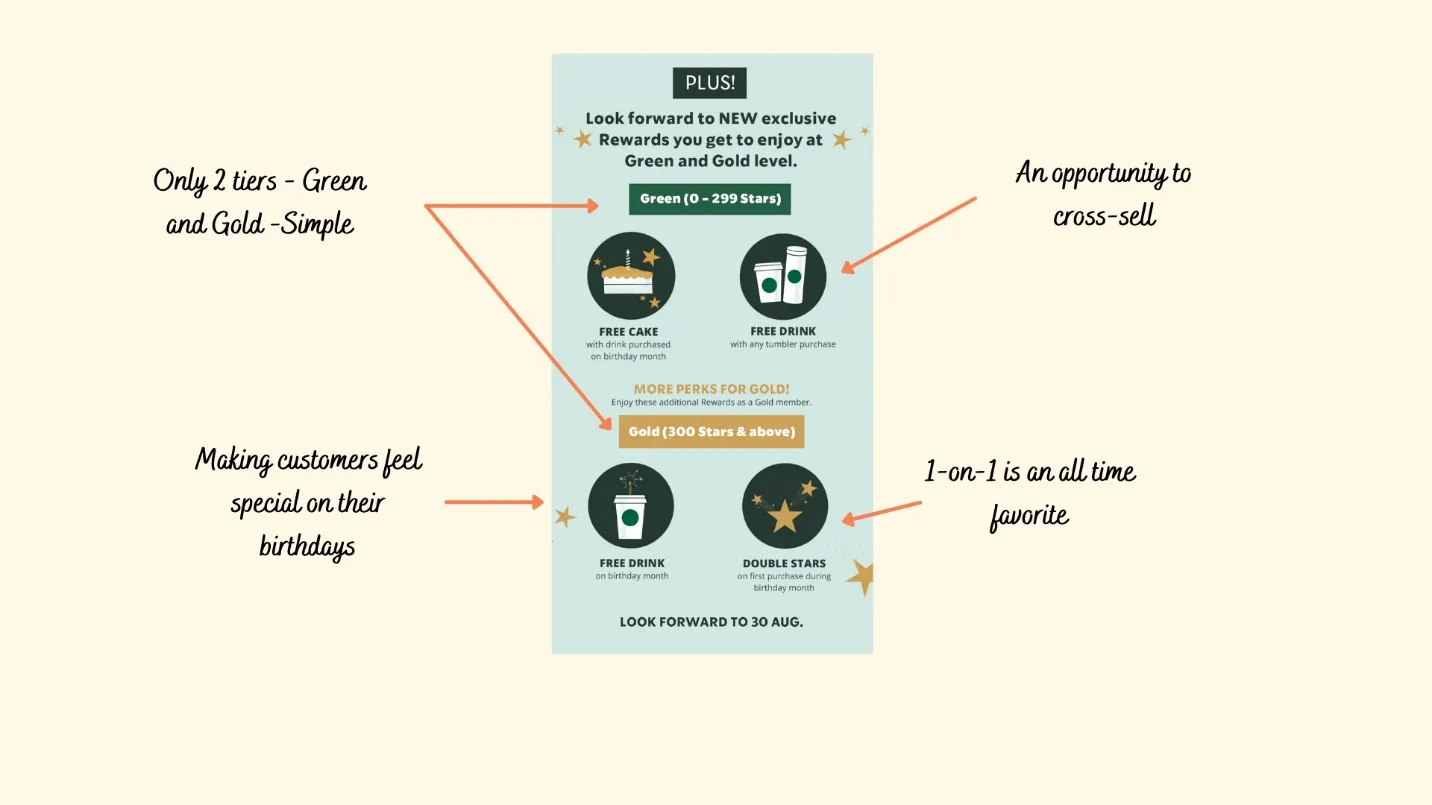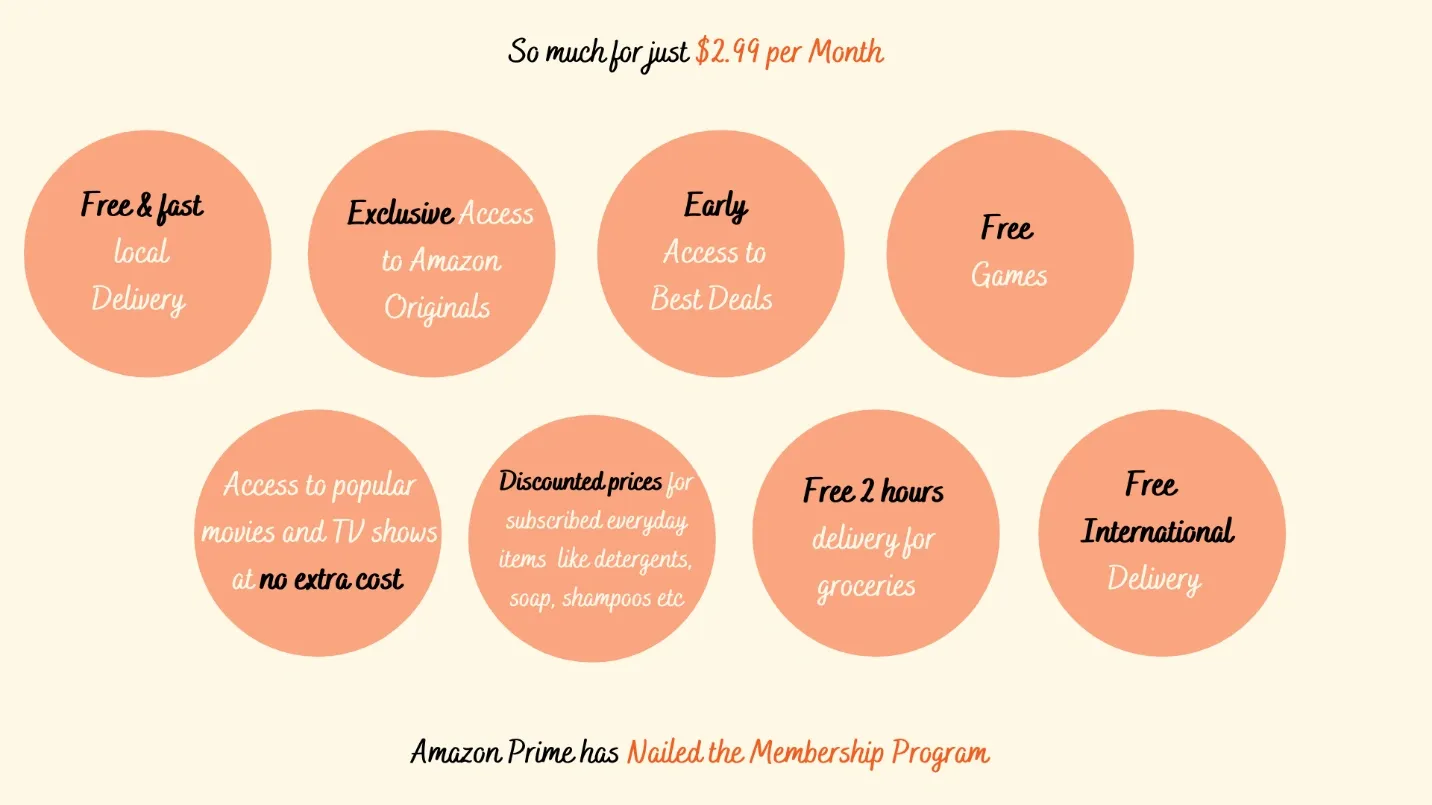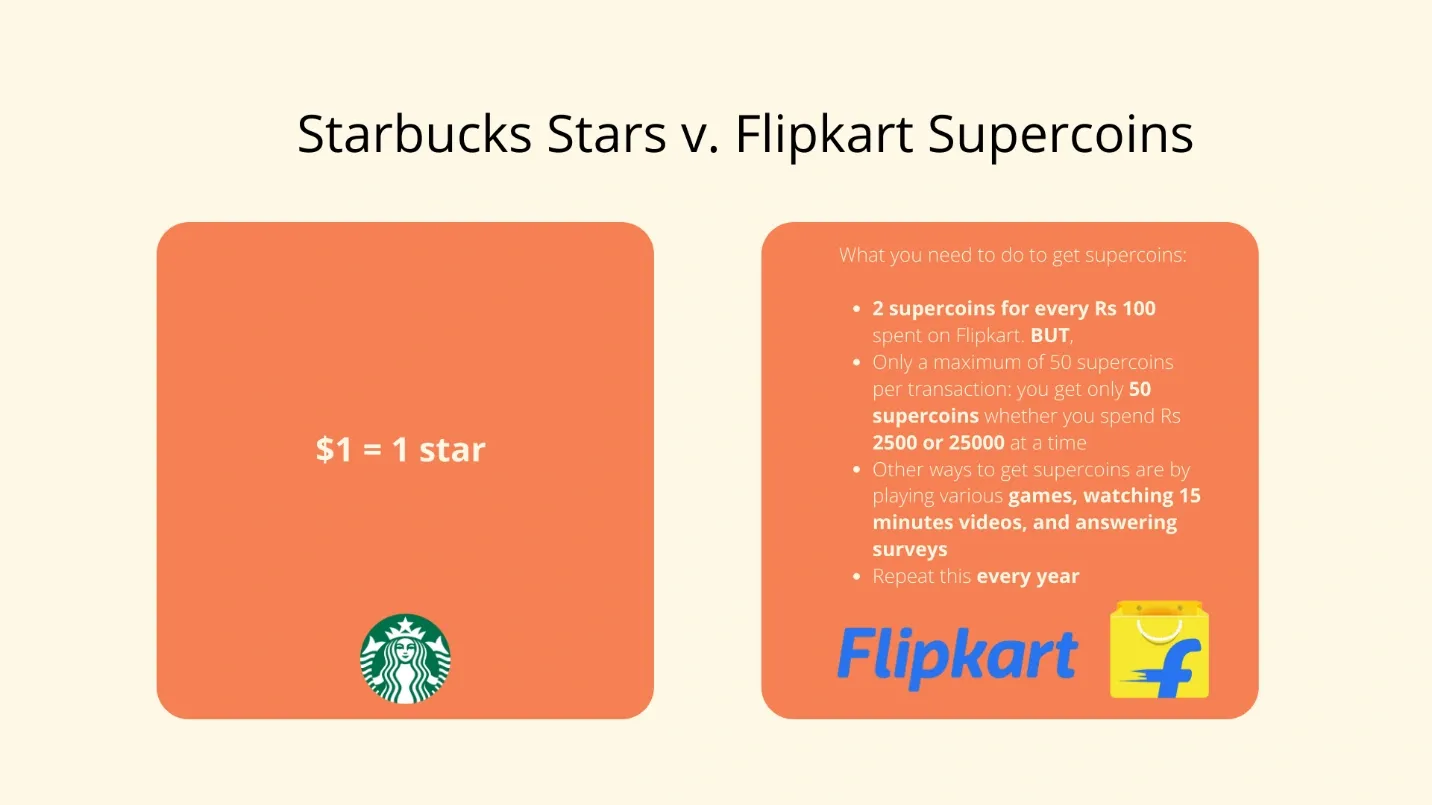The Anatomy of an Ideal Reward Point System for Customers
Designing an effective reward point system is more than offering perks — it's about building lasting relationships. This blog explores the strategy, psychology, and structure behind loyalty programs that work, helping brands retain, engage, and delight customers.
On this page
Customer retention depends on creating experiences that feel personal, consistent, and valued — rewards simply become one part of that larger connection.
While offering points might seem like the obvious path to loyalty, starting with that mindset can miss the bigger picture. Simply copying what other brands are doing won’t guarantee results either—if it did, loyalty programs wouldn’t fail as often as they do.
Instead of focusing on formulas and quick wins, it’s time to understand what truly keeps customers engaged over time: relevance, connection, and value that feels personal. That’s the foundation of a reward system that actually works.
This blog explores how to design a reward point system that’s rooted in relevance, emotional connection, and personalized value; the kind that keeps customers engaged, satisfied, and coming back for more.
What is a reward points system?
A points-based rewards system enables you to show appreciation to your customers by offering them reward points. It’s a tangible way to recognize their loyalty, as each point holds monetary value. This makes customers feel valued and encourages continued engagement with your brand.
The psychology behind a reward point system
Let’s explore the key psychological drivers that make reward point systems effective:
Status
In general, incentives that lift the status attract humans and the opportunity to elevate their status. Conferring an elevated status to customers may thus motivate them to behave loyally. For instance, while being at the airport, ever observed passengers in the priority queue? Their expressions tell how much they enjoy that priority treatment.
Habit
If your product/service and attractive rewards keep bringing customers back to you, they develop a habit of buying from you. And, habit creation should be our ultimate goal here.
A great example of habit-forming rewards is Snapchat’s Snapstreaks feature. When two users send Snaps to each other for consecutive days, a fire emoji and streak count appear next to their names.
This simple gamified visual acts like a point system, encouraging users to keep the streak alive by continuing daily interactions. While there are no material rewards, the psychological value of maintaining a streak—especially long ones—drives habitual use and engagement. Many users log in daily just to preserve their streaks, making it one of the most effective non-monetary loyalty mechanisms in social media.
Relational
Factors that play a key role in initiating a solid relationship include:
- benevolent motives,
- discretionary rewards,
- communal qualities signaled by the firm.
The impact of the relationship is even stronger when consumers develop a relationship when the program rules seem fair and relatable.
REI (Recreational Equipment, Inc.), an American outdoor retail brand. REI has cultivated deep customer relationships through its co-op membership model, which is built on transparency, shared values, and a sense of community.
Members pay a small one-time fee and, in return, receive annual dividends, access to exclusive sales, and outdoor classes or events.
REI also demonstrates benevolent motives through its commitment to sustainability and its practice of closing stores on Black Friday to encourage people to spend time outdoors (#OptOutside).
These discretionary actions and the fair, value-driven structure of the co-op create a relationship that feels less like a transaction and more like belonging to a purpose-driven community—deepening customer loyalty over time.
The mechanics of a reward point system for customers
Customer reward programs should be:
Structured
The reward point system for customers should be well structured, easy to understand, and membership based. Well-structured programs make the best use of human psychology to drive success. Easy to understand systems increase customer engagement. Membership allows you to collect some information about the customers.
Such information could help improve the relationship between you and them.
The Starbucks Rewards program is a well-structured, tiered loyalty system that allows customers to earn points—called "stars"—with every purchase. Members earn:
-1 star per $1 when paying directly
-2 stars per $1 when using a Starbucks Card via the app
Stars can be redeemed across clear reward levels:
-25 stars: Drink customization
-50 stars: Free brewed drink or bakery item
-150–400 stars: Premium drinks, meals, or merchandise
The program is integrated into the Starbucks app, offering a seamless experience with real-time star tracking, personalized offers, and regular promotions. Its simplicity, transparency, and gamified elements make it a model of a structured and effective points-based rewards system.


Long-term oriented
Consider reward point systems as a long-term strategy as they are expected to form a long-term investment for both the provider and the members.
Amazon prime has nailed it with their ‘Prime’ program. While it initially launched as a fast-shipping benefit, Prime has evolved into a comprehensive ecosystem designed to keep customers engaged over time.
Today, members receive a wide range of benefits including free and expedited delivery, access to Prime Video and Music, exclusive member-only deals, early access to sales events, and even free eBooks through Prime Reading.
This layered value proposition encourages ongoing participation and makes Prime more than a transactional perk—it becomes a part of the customer’s everyday life. The more customers use these benefits, the more invested they become, making them less likely to shop elsewhere.
By continuously expanding the value of its loyalty offering, Amazon has created a reward system that supports long-term customer retention and habitual engagement.

Foster loyalty
A reward point system fosters loyalty by creating a sense of value and recognition for every interaction a customer has with a brand. When customers earn points for purchases, referrals, or other desired actions, they feel acknowledged and motivated to return. This system turns routine transactions into goal-oriented behavior, encouraging repeat business in exchange for meaningful rewards.
Over time, as customers accumulate points and get closer to redemption, their engagement deepens—leading to stronger brand affinity, increased trust, and long-term loyalty.
Futuristic
The loyalty programs should reward customers for their loyalty based upon their current or future value to your brand. Rewards may, for instance, consist of discounts, gifts, or preferential treatment.
A compelling example of a futuristic loyalty program is Bilt Rewards. Bilt has redefined traditional loyalty programs by allowing members to earn points on rent payments—a significant monthly expense that previously offered no rewards.
In April 2025, Bilt expanded its offerings to include student loan payments, enabling members to redeem points to pay down loans through providers like Nelnet, MOHELA, and Sallie Mae.
This approach not only provides immediate value but also fosters long-term financial wellness, particularly among younger demographics. By integrating rewards into essential financial obligations, Bilt's program encourages habitual engagement and positions itself as a forward-thinking solution in the loyalty landscape.
Why do most reward systems fail?
Besides knowing what to do, you must also check out what not to do. Majorly, the following five reasons lead to the failure of reward point systems:
1. Rewards do not feel worth it: Equity theory
Do customers feel fair or cheated about the rewards presented for the money, time, and effort they spent?
If the answer to this question is yes, it’s a recipe for failure.
The equity theory states that people should receive benefits or rewards proportional to the relative efforts or inputs they provide. Therefore, the perception of equity or inequity directly leads to fair judgments, significantly impacting the buyer-seller relationship. Perceived unfairness has a strong negative effect on the success of the program.
2. Complex reward point system structure
We showed two reward point systems to a boy ten years of age - Starbucks and Flipkart Plus. We asked him which one he would choose out of the two. He said, “I like the Starbucks one better.”
We asked - “why?”. He said: It’s simple, I don’t have to spend too much money to get points. Also, I don’t want to fill out any surveys to earn points.
Here are the two reward point structure mentioned above. Which one makes more sense to you?

3. Non-dynamic nature of reward point system
What worked for generation X might not work with millennials; what worked with millennials might not work with gen Z. You must keep revamping the reward point system as time passes.
Today’s generation needs instant gratification they can’t for weeks and months for tiny rewards.
- Redemption required extra effort of actually going to a post office and mailing the collected point tokens.
- No one wants to look like a billboard. It’s no cooler to wear a t-shirt flashing a brand name unless it elevates a person’s status.
4. Not promoting the rewards program
Program promotion requires as much effort as you put into crafting a strategic reward point system. The various channels can be:
- Easy to spot and place on the website.
- Emails with easy-to-understand infographics for the reward point system.
- SMS on completing every target accompanied with reward redemption details.
- Creative social media campaigns.
- Ads on different social media channels etc.
Friction in customer participation
Customers may have certain objections to entering into a relationship with your brand like:
- Consumers are overloaded with companies’ marketing efforts and suspicious of companies that wish to build relationships with them.
- They feel used and manipulated as they think that companies do not reciprocate and only aspire to gather consumer information and increase sales.
- Consumers need more than just discounts or complimentary products, for instance - exceptional customer support, preferential access to offers, etc.
The idea here is to proactively overcome any entry barriers with a thorough understanding of consumer behavior.
Step by step process for creating a reward point system
The main benefits of a loyalty program include increased customer loyalty, greater advocacy, higher repeat-purchase rates, lower price sensitivity, and stronger attitudes towards brands and retailers:
1. Set a clear goal and roadmap
A point-based reward system works best when built around a clear purpose. Before launching, define the core goals of your program. Ask yourself:
- What behavior do you want to encourage—frequent purchases, referrals, social sharing, or product reviews?
- Who is the program for—first-time buyers, loyal customers, or high-value spenders?
- Who can award or allocate points—your system automatically, or your support or sales teams?
- What channels or actions will trigger points—website, app, in-store, or a combination?
Establish a detailed roadmap outlining how consumers earn and redeem points. Make sure the actions align with your brand’s customer engagement goals. Assign internal ownership for managing customer data, program rules, and performance analytics. The clearer your structure, the more effective the system will be.
Automating the program with a robust digital platform reduces manual effort and ensures a smooth, scalable experience.
2. Chalk out a budget
A successful reward point system requires careful budgeting. Begin by evaluating your overall customer retention expenses, which typically include costs like advertising, sales efforts, promotions, customer support, and loyalty incentives. From this, allocate a specific percentage—such as 15% to 25%—toward implementing and running the points-based rewards program.
This allocation serves two purposes: it directly contributes to customer satisfaction and provides a measurable way to assess how effectively rewards reduce churn. Track how your customers interact with the program and monitor retention rates over time.
Based on engagement levels, be prepared to refine the reward structure or increase investment. Periodically survey customers to ensure the rewards align with their interests and continue to deliver perceived value.
3. Find a common denominator for points
Try to keep things simple like Starbucks ($1 spent on awards for customers with 1 star). The idea here is to remove cognitive load from your customers. If they are required to process too much information, they would rather not engage in your rewards point program.
Loyalife’s seamless integration with Xoxoday Plum brings unmatched flexibility to your rewards strategy through flexible denominations. Whether you're rewarding for micro-engagements or high-value milestones, Loyalife allows you to:
-Choose from a wide range of denominations based on your specific use case and campaign goals.
-Offer rewards in multiple values across all categories—gift cards, experiences, merchandise, and more.
-Configure decimal denominations with precision, enabling you to fine-tune the reward value down to the last unit, ensuring fairness and maximizing engagement.
4. Create a reward structure
In rewards, when you just offer discounts or offers only around your products, it feels fishy to the customers. Customers think you just want a bigger share from their pockets than genuinely rewarding for their customers. The best bet here would be to enter into a collaboration with companies providing a humongous catalog of rewards for customers to make satisfactory choices.
There can be a variety of rewards; the only limit is your creativity and imagination.
Also, try to keep the milestones of the reward point system for customers closely placed. So that user feels it easy to achieve the milestones. And with every milestone, the reward should keep getting bigger (So that customers keep coming back for more).
The rewards should be a mixed bunch of stuff that makes the customer feel valued. These three things are instrumental in bringing the customer back to your product/service.
While designing the reward point program, make sure to have a robust eco-system that helps you deliver what you are promising.
Instead of going with the full-fledged reward point software, you can start small. For example, you can integrate a RaaS (Rewards as a Service) API with your sales system to reward your customers.
5. Make rewards meaningful
A points system only motivates consumers if the rewards feel genuinely valuable. To drive real engagement, offer redemption options that reflect a wide range of tastes and interests.
Give customers the flexibility to redeem their points for what they truly want—whether that’s:
- Digital gift cards from popular brands
- Cashback on future purchases
- Exclusive brand merchandise
- Event tickets or experiences
- Charitable donations
Provide a dynamic rewards catalog that updates regularly and caters to different demographics. Offering lifetime validity for points can also motivate consumers to accumulate and aim for more valuable rewards over time.
6. Make the program easy to use
Even the best rewards will fall flat if the experience isn’t user-friendly. Your platform should make it easy for consumers to:
- Viewpoint balances and history.
- Understand how to earn more points.
- Redeem points without hassle.
- Get customer support if needed.
A smooth, intuitive interface keeps users engaged, encourages repeat participation, and strengthens brand loyalty through convenience and trust.
7. Build flexibility into the structure
The real strength of point-based systems lies in their adaptability. As consumer preferences and market dynamics change, so should your program.
You can easily adjust:
- Campaign timelines (seasonal offers, flash rewards, etc.).
- Target audiences (VIPs, new users, inactive customers).
- Redemption mechanics (discount thresholds, exclusive bundles).
- Point-earning actions (social media engagement, user reviews).
- Budget allocations and point-to-currency ratios.
By keeping your system agile, you can tailor campaigns based on real-time insights and seasonal needs—ensuring your program stays relevant, valuable, and engaging all year round.
8. Implement and promote
After learning the know-how of the software/API and implementing the reward point system, the next step is full-fledged promotion. If customers are not well aware of your reward point system, they can’t engage meaningfully with it.
For example, give reward point system information a prime location on your website, integrate informational pop-ups if you have tech products, use advertisements, etc. Again, the program will be a failure if users are not well aware of it.
9. Revisit and reiterate
Once you launch your reward point system, monitor the engagement of customers with it regularly. Invite them for surveys (tied with incentives) to understand their expectations from the reward point system. Then, based on the understanding of customer expectations, reiterate your reward point system.
Examples of reward points system
Here are some examples of reward points:
1. Milestone rewards
Customers who reach significant milestones—like hitting a certain number of purchases, reaching loyalty program tiers, or celebrating anniversaries with your brand—deserve elevated experiences. Milestone rewards allow customers to redeem their accumulated points for indulgent experiences that feel exclusive and celebratory.
Examples of milestone rewards:
- A multi-course gourmet dining experience at a popular restaurant.
- A luxurious spa day with premium treatments and wellness packages.
- Passion-specific redemptions like an adventure trek, concert tickets, or creative workshops.
By allowing customers to fulfill personal wishes or bucket-list experiences without financial stress, your brand creates a lasting emotional impact.
2. Gift cards
A one-size-fits-all approach doesn’t resonate with modern, diverse consumers. A flexible, expansive rewards catalog empowers customers to choose redemptions that align with their interests.
Sample catalog options:
- Latest tech gadgets for early adopters.
- Monthly book subscriptions for avid readers.
- Home décor items, fitness gear, streaming subscriptions, and more.
This approach gives your customers autonomy and makes them feel seen as individuals. It also increases the perceived value of the reward system, making it more engaging and inclusive.
3. Transactional rewards
The backbone of most point systems, transactional rewards offer points for:
- Every dollar spent
- Writing reviews
- Referring friends or sharing purchases on social media
These predictable, transparent rewards keep customers engaged and encourage frequent interaction.
5. Gamified experiences
Gamification can elevate point-based systems through interactive, fun elements:
- Points for completing challenges or quizzes.
- Leaderboards with top redeemers.
- Scratch-and-win cards or spin-the-wheel features to earn bonus points.
Such mechanics make earning points feel like a game, increasing stickiness and delight.
6. Tier-based redemption
Encourage continued engagement by unlocking better rewards as customers accumulate more points or move up tiers.
Example tiers:
- Silver: Basic discounts and early access.
- Gold: Free shipping and exclusive drops.
- Platinum: Concierge-style service, VIP experiences.
This creates a sense of progression and exclusivity, keeping customers motivated.
7 Benefits of points-based rewards system
A points-based rewards system offers a structured, engaging, and scalable way to build customer loyalty, increase repeat purchases, and deepen brand affinity. Here are the key benefits:
1. Encourages repeat purchases
Customers earn points with every transaction, which incentivizes them to come back and shop again. The more they spend, the more they earn—creating a loop of continued engagement and buying behavior.
2. Boosts customer retention
A well-designed points system gives customers a reason to stick around. When customers accumulate points, they're less likely to switch to competitors, especially if rewards are meaningful and attainable.
3. Increases customer lifetime value (CLV)
By incentivizing repeat business and deeper engagement, points-based systems raise the overall value a customer brings over time. It also opens opportunities for upselling and cross-selling.
4. Drives specific customer behaviors
You can assign points to targeted actions like signing up for newsletters, writing reviews, referring friends, or completing profiles. This allows brands to shape customer behavior beyond just purchases.
5. Gamifies the customer experience
The accumulation and redemption of points adds a game-like element to the shopping journey. Features like tier upgrades, surprise bonuses, and redemption goals enhance excitement and user engagement.
6. Supports personalization
With data collected from customer activities, you can personalize offers and point-based incentives. This increases relevance and satisfaction, making customers feel more valued.
7. Improves brand affinity and emotional connection
Offering thoughtful rewards in exchange for loyalty fosters a sense of appreciation. Customers are more likely to become advocates when they feel recognized and rewarded.
8. Flexibility in redemption options
Customers enjoy the freedom to choose rewards that matter to them—whether that’s gift cards, exclusive merchandise, free services, or experiences. This customization enhances perceived value.
9. Easy to track and scale
Digital platforms make it easy to manage point accruals and redemptions, track performance, and scale the program across geographies and customer segments.
10. Cost-effective loyalty strategy
Since points are typically redeemed only after a specific threshold or tied to actual spend/engagement, businesses can control costs while driving long-term customer value.
Build an engaging reward point system
Creating a successful points-based reward system isn’t about copying what others have done or offering random discounts. It’s about understanding your customers deeply, aligning your rewards with their values, and making every interaction feel meaningful. When done right, a points-based system doesn’t just retain customers — it turns them into loyal fans and brand advocates.
But success demands more than just strategy — it demands the right technology.
Why choose Loyalife for your points-based rewards system?
- Flexible point denominations: Whether you're rewarding high-value purchases or micro-interactions, Loyalife supports decimal and customized denominations tailored to your business goals.
- Extensive reward marketplace: Give customers access to 10M+ global reward options — from gift cards and experiences to exclusive merchandise — across 150+ countries.
- Seamless integration: Connect effortlessly with your CRM, ERP, POS, and marketing tools using Loyalife’s robust API infrastructure for real-time data sync and loyalty automation.
- Gamified engagement: Add excitement with features like spin-the-wheel, tier progression, and surprise-and-delight bonuses that increase stickiness and satisfaction.
- Personalized loyalty journeys: Use AI-powered insights to design experiences that evolve with customer behavior — delivering smarter, more contextual rewards every time.
- Scalable & easy to use: From startups to enterprises, Loyalife grows with you, offering an intuitive interface, detailed analytics, and effortless program management.
Book a demo with Loyalife today and turn transactions into long-term relationships.









